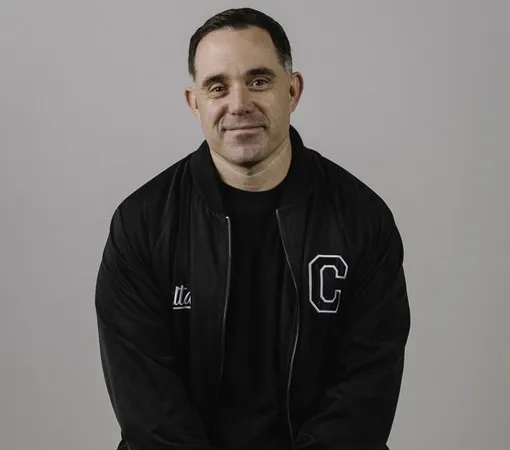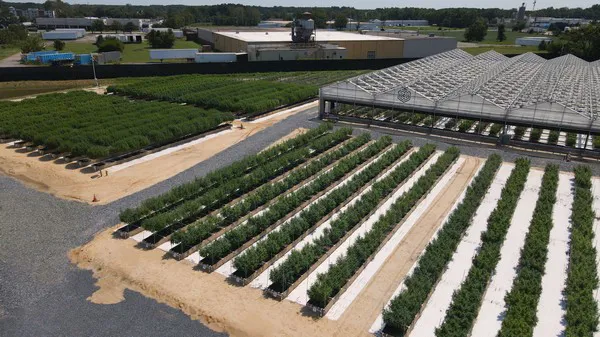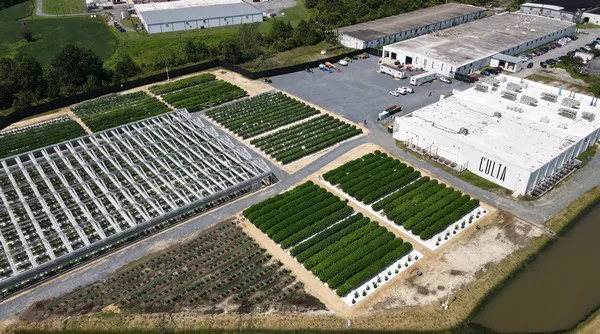“It is important for companies to acknowledge that the cannabis industry has issues when it comes to sustainability. However, the regulations that are in place prevent companies from taking a more sustainable approach,” says Mackie Barch, Co-Founder of Culta, a Maryland-based cannabis brand. The company recently announced its membership in the Sustainable Cannabis Coalition. “From promoting outdoor production to reducing packaging waste, there are a lot of processes that can be improved. However, a company can’t do much without supporting regulations.”
Mackie Barch (Photo by Nicole Barr)
Possible improvements
Barch explains that one of the sustainable possibilities growers should consider is outdoor cultivation. “This is a great way to lower your carbon footprint and increase profitability. The average cost of a cultivation facility is around $400 per square foot, whereas outside production costs around $20 per square foot. Outdoor production or multimodality cultivation (indoor and outdoor on the same site) can thus be very beneficial for the business, as well as the environment. Unfortunately, a lot of states prevent cannabis companies from growing outside, so many cultivators don’t even have the option currently.”
Culta's indoor and outdoor production (Photo by Stanley Trutsi)
A more commonly heard improvement companies can make, is switching to LED lights. “Some people are still convinced that LED doesn’t grow as well as HPS. However, this is not true and there are even added benefits. Although LED lights are more expensive, they have a much longer life cycle, so you don’t have to replace the bulbs or the ballast. Moreover, they have a lower heat load, meaning that you can not only reduce your HVAC needs but also stack them. This provides the opportunity to grow cubic feet of cannabis flower instead of square feet, which is an easy way to increase production.” Companies can also consider generating more power on site, Barch says. “There are a lot of options, such as carbon credits, Combined Heat and Power, wind or solar energy. Culta’s goal is to generate 80% of our power on site in 10 years.”
Culta is also looking at ways to reduce their waste, but that is not an easy task. “Single-use plastic is a problem, so we are looking at biodegradable options, for example. This is still very expensive, however, which is difficult to justify to customers who don’t want to pay more. In the meantime, we have put recycling centers at our dispensary, so customers can bring their used packaging and we recycle it. Moreover, we would love to recycle our cannabis stalks, by putting them in our compost and using them in our soil. However, we are not allowed to do that as this is illegal. Instead of composting them, they are now going to a landfill. This is a regulatory problem that needs to be changed.”
Photo by Stanley Trutsi
A multifaceted approach
Over the next decade, Barch expects to see a massive growth in the cannabis industry across North America. “In order to fulfill all of that demand, the facilities are going to be built over the next 5-6 years. We really have to take the environmental concerns seriously and figure out how to be strategic about it. Concerning facility design, we need to consider ways to lower operating costs, by lowering power costs for example. Such improvements are not only better for one’s business, but also better for the environment.”
“Still, many people just consider the carbon emissions that occur during production. However, 40% of your carbon footprint is actually embedded,” Barch explains. “It went into the drywall you put up, the steel you manufactured, the plumbing, for example.” Barch explains that it is important to take a multifaceted approach. “First work with your architect on how to lower the carbon impact when it comes to the materials and design of your facility. From there on, take a look at the carbon output of your production processes and see how you can improve there. I think regulators are still at infancy of understanding the industry. Over time when they understand how much power these businesses are using, they will pass regulations and force these businesses into lowering their carbon footprint. However, once you have built your facility you can’t go backward. Therefore, smart design at the beginning of the project is important.”
While the companies’ sustainable intentions might be there, Barch explains that the main challenge is that the industry is federally illegal. “There is a barrier between us and the rest of the world: the federal government’s Schedule 1. As a result, we don’t have access to any federal grants or research, for example. If it continues like that, it is going to hurt the cannabis industry. We have very limited time to work on these new facility designs as they are being built so rapidly now. My fear is that we are going to miss the window. We need the support to do things correctly immediately, instead of having to deal with the consequences later. Overall, we need a stronger sustainability sense from the regulators.”
For more information:
Culta
www.culta.io
